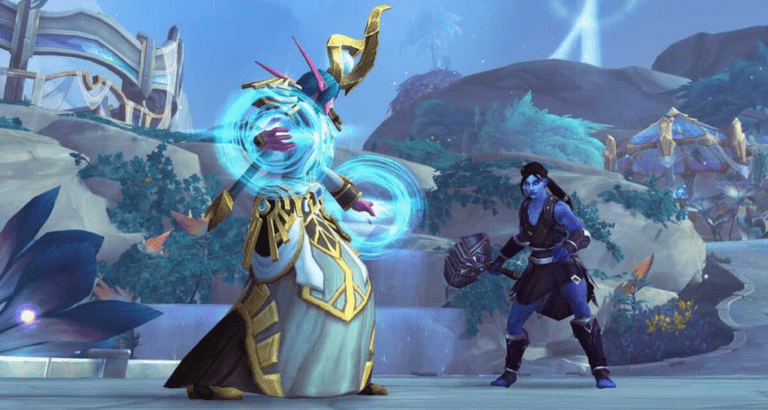The Metaverse represents a paradigm shift in digital interaction, merging virtual reality (VR), augmented reality (AR), and blockchain technology to create immersive environments where users can socialize, play, and transact. As the demand for these interactive platforms grows, the role of the Metaverse game developer becomes increasingly critical. This article delves into the innovative strategies and technologies employed by Metaverse game developers, highlighting real-world examples, complex data, and the future trajectory of this burgeoning field.
Understanding the Metaverse
The Metaverse is often described as a collective virtual space that is created by the convergence of virtually enhanced physical reality and physically persistent virtual reality. According to a report by Bloomberg Intelligence, the Metaverse market is projected to reach $800 billion by 2024, driven by advancements in VR and AR technologies, as well as the increasing popularity of blockchain-based assets (Bloomberg, 2021). This growth presents a unique opportunity for game developers to innovate and create engaging experiences that transcend traditional gaming paradigms.
The Role of Game Developers in the Metaverse
Metaverse game developers are tasked with creating interactive platforms that not only entertain but also facilitate social interaction and economic transactions. This requires a deep understanding of various technologies, including game engines, 3D modeling, networking, and blockchain integration. Developers must also consider user experience (UX) design, ensuring that interactions within the Metaverse are intuitive and engaging.
Key Technologies in Metaverse Game Development
Several key technologies are instrumental in the development of Metaverse games:
1. Game Engines
Game engines such as Unity and Unreal Engine are foundational tools for Metaverse game developers. These engines provide the necessary frameworks for creating 3D environments, physics simulations, and real-time rendering. For instance, Epic Games’ Unreal Engine has been utilized in the development of the popular Metaverse platform, Fortnite, which has successfully integrated social experiences and gaming.
2. Blockchain Technology
Blockchain technology plays a crucial role in the Metaverse by enabling secure transactions and ownership of digital assets. Non-fungible tokens (NFTs) have emerged as a popular method for representing ownership of unique in-game items. According to NonFungible.com, the NFT market reached a valuation of $10.7 billion in 2021, highlighting the growing interest in digital ownership (NonFungible.com, 2021). Developers are increasingly incorporating NFTs into their games to enhance player engagement and create new revenue streams.
3. Virtual and Augmented Reality
VR and AR technologies are essential for creating immersive experiences within the Metaverse. Companies like Oculus and Microsoft are leading the charge in developing hardware that enhances user interaction. For example, Oculus Quest 2 has made VR more accessible, allowing developers to reach a broader audience. The integration of AR in games like Pokémon GO has demonstrated the potential for blending real-world elements with virtual experiences, further enriching the Metaverse landscape.

Innovative Game Design Strategies
To create compelling experiences in the Metaverse, developers must adopt innovative game design strategies that prioritize user engagement and community building.
1. User-Generated Content
Encouraging user-generated content (UGC) is a powerful way to foster community engagement. Platforms like Roblox have successfully leveraged UGC, allowing players to create and share their own games and experiences. This not only enhances player investment but also expands the content available within the Metaverse, creating a dynamic ecosystem.
2. Social Interaction
Integrating social features into games is essential for creating a sense of community. Games like VRChat and Rec Room have successfully implemented social interaction mechanics, allowing players to communicate, collaborate, and compete in virtual spaces. These interactions can lead to the formation of lasting friendships and communities, which are vital for the longevity of Metaverse platforms.
 VRChat allows communication, connection, and community building.
VRChat allows communication, connection, and community building.
3. Economic Systems
Developers are increasingly designing in-game economies that mirror real-world financial systems. This includes the use of cryptocurrencies for transactions, as seen in games like Axie Infinity, where players can earn tokens through gameplay. According to DappRadar, Axie Infinity generated over $1 billion in revenue in 2021, showcasing the potential for economic innovation within the Metaverse (DappRadar, 2021).
Challenges Faced by Metaverse Game Developers
Despite the exciting opportunities presented by the Metaverse, developers face several challenges that must be addressed to ensure success.
1. Technical Limitations
The development of complex, immersive environments requires significant computational power and bandwidth. As the number of users in the Metaverse increases, developers must optimize their platforms to handle high traffic without compromising performance. This necessitates advancements in cloud computing and edge computing technologies.
2. Regulatory Concerns
The integration of blockchain and cryptocurrencies raises regulatory questions that developers must navigate. Issues related to data privacy, digital ownership, and taxation are still being debated by governments worldwide. Developers must stay informed about regulatory changes to ensure compliance and protect their users.
3. User Experience
Creating an intuitive user experience is paramount in the Metaverse. Developers must consider the diverse backgrounds and technical skills of their users. Ensuring accessibility and ease of use will be critical in attracting and retaining players in this competitive landscape.
Future Trends in Metaverse Game Development
The future of Metaverse game development is poised for significant evolution, driven by emerging technologies and changing user expectations.
1. Enhanced Interoperability
As the Metaverse continues to grow, the need for interoperability between different platforms will become increasingly important. Developers are exploring ways to create seamless experiences that allow users to transition between various virtual worlds without losing their assets or progress.
2. AI and Machine Learning
Artificial intelligence (AI) and machine learning will play a crucial role in personalizing user experiences within the Metaverse. By analyzing player behavior, developers can create tailored content and recommendations, enhancing engagement and satisfaction.
3. Sustainability in Game Development
As environmental concerns grow, developers are being called to adopt sustainable practices in their game development processes. This includes optimizing energy consumption in data centers and exploring eco-friendly blockchain solutions to minimize the carbon footprint of their platforms.
In summary, the role of Metaverse game developers is pivotal in shaping the future of interactive platforms. By leveraging advanced technologies, innovative design strategies, and addressing challenges, developers can create engaging and immersive experiences that redefine digital interaction. As the Metaverse continues to evolve, staying ahead of trends and embracing new opportunities will be essential for success in this dynamic landscape.

